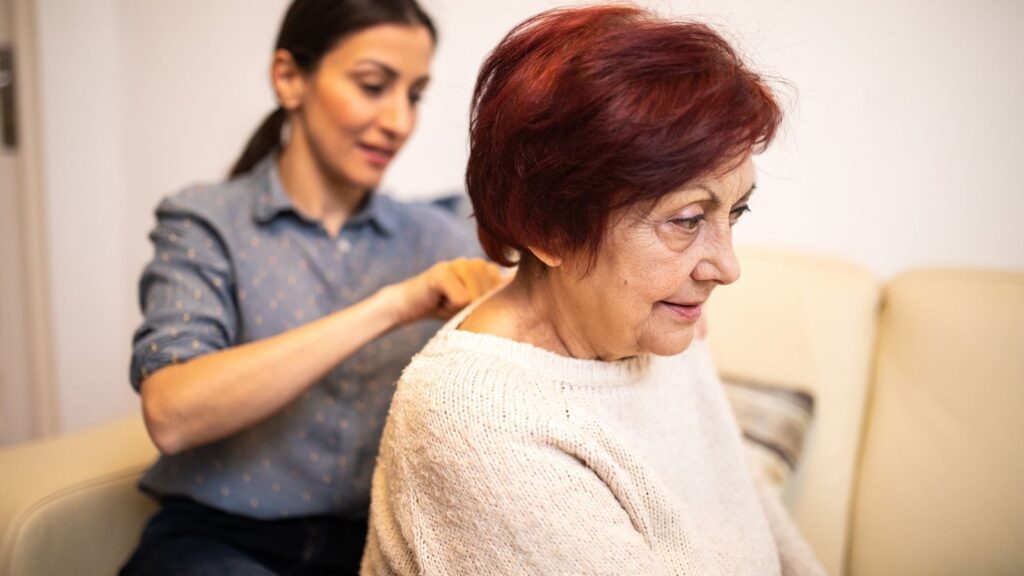5 Learnings: Moving My Parents into Assisted Living
 Submitted by Peter Zollo
Submitted by Peter Zollo
Co-founder
Joe and Bella
If you’re thinking about moving a loved one into a senior-living community, I’m hoping my family’s experience — including some surprises — might be helpful. At the very least, you’ll see you’re not in it alone, and there are plenty of positives that I hope you find encouraging.
1. Life Has Forever Changed

This was the toughest learning; life would never be quite the same again. Goodbye to my parents’ home, many of their and our traditions and customs, friends and neighbors, and my parents’ way of living and enjoying life.
But there was no time to wallow.
Those memories will always be there to warm you up and pick you up. But what I learned was you’ve got to adjust – your thinking, your planning, and certainly your routine.
It’s sad – some people who were so important in my parents’ lives were no longer in it. Some of their friends and even close family members struggled with the thought of visiting them in assisted care. Sure, there were phone calls, but even those curtailed after time, as my parents’ challenges increased (including the eventual move to memory care for both).
What was truly important, however, did not change. Who they were at their core didn’t change. Although they now had trained professionals to assist them, they needed us more than ever. And that was a huge learning.
We needed to be there with them – physically, virtually, frequently. We needed to monitor their care and to become an advocate for them. To do so effectively, we needed to be there (yep, I’m making this point again) not only frequently but at different times during the day and evening.
This variety is how you learn the culture of their new community, how they fit in, and how you can help (which sometimes, as contrary as it sounds, means giving them space). And, that’s how you can meet all their care partners (remember, three shifts of frontline workers) and family members of other residents.

2. There’s An Adjustment Period
When you make the move – whether it’s the first time into any senior-living community or you’re moving to another community – expect that your loved one will feel out of sorts and will likely take a step back in any behavioral improvement they’ve recently demonstrated.
For those with and without cognitive disabilities, moving is never easy – finding your own place in a new place is scary. We all hear about the importance of getting out of your “comfort zone.” I’d say the opposite is true for older adults; you want to find that zone and keep them in it. So, moving older loved ones to a new community will almost always result in older adults taking a step back.
When I moved my mom into her third community, I asked the Executive Director about this very issue, as I was concerned that my mom didn’t seem herself — that she seemed less social, less confident, less joyful. Jen, the ED, told me to give it eight weeks at which time my mom would hopefully be 100% back. I thought at the time that was a crazily long time to wait.
Jen was right.
3. They Can Make Wonderful New Friends

When we think about moving someone we love into a new community, we tend to think mostly in the negative. Yes, they’ll be safer there, but it’s not their home, and that wonderful part of their life is over forever.
For my mom who was always so social, missing her friends and other close family members could lead to feelings of sadness and depression. It wasn’t surprising to me, then, that when my parents shared a two-bedroom suite at their first community, they stayed to themselves, despite encouragement to participate in activities.
So, aside from having every meal with Joe and Bella (yes, a truly wonderful couple who inspired us to give back as they gave so much to us), they didn’t venture out to meet other residents.
We were fortunate to be able to keep on Nilo, my dad’s buddy and care partner, who continued to take my father on all his favorite outings. But my mom pretty much stayed in her room, as in the past few years she felt more comfortable staying put (spending more and more time in her bedroom). Old habits are tough to break.
But life changed.
When we moved my parents to a different community, my dad “graduated” to the memory-care floor and, for the first time in 62 years, my parents were separated. Surprisingly, my mom thrived. Not long thereafter, my dad passed, and my mom continued her journey, though she also began her own struggles with dementia.
I can still hardly believe how well my mom adjusted to my dad being gone, though – as you’d expect – after more than six decades of marriage, she missed him deeply and spoke of him often. I’ll forever be grateful to Sarah, the new community’s ED, who insisted that my mother get out of her room and truly become a member of the community, something that never happened at the previous place.
And, lo and behold, my mother not only began to attend activities, but she was also the first one to arrive. And, in time, together with a couple of new close friends she met at this community, she became a leader – finding her sense of place, her sense of self, and her sense of humor.
Amazing!
So, when I visited her, I did so when she was out and about in the community. I soon got to know the other residents, their families, and all the staff. And, they became a second family not only to my mom, but to us, too. I was now in a better position to advocate for my mom and to also support the community’s executive team and their frontline workers.
My mom loved to soak in the sun on warm days with two of her new friends, Lou and Laura. She showed gratitude and extended friendship to several of her special caregivers, often greeting them with a kiss on the hand and a hug.
And, she especially loved the activity directors, as my mom would always want to sit in the front row for performances, bingo, and – her favorite – word games, where she was unbeatable. Plus, she really developed some schtick, which not only did other residents enjoy, but so did their families and the staff.
Activity directors, residents, and even family members looked to keep activities engaging and the room lively. So, when we moved her into her second and then third community, she had all-new audiences for her jokes (which my mom repeated so often that my whole family could repeat each one verbatim).
4. They Surprisingly Liked the Food!
My mom was never a complainer, but she was also a picky eater and proud family cook. Anytime, during the eight-plus years she spent in assisted-living and memory-care, I asked her about the food she’d reply: “The food is fine. I don’t have to shop; I don’t have to cook or clean. So, I don’t complain!”
“Dad – you could eat bacon every morning!” He said, “Bacon? Every morning? Yes, okay then!”
My dad, on the other hand, loved to eat – and was adventurous in his cuisine pursuits. We moved my mom into Assisted iving 10 days before we finally convinced him to join her there. What finally worked was when I said, “Dad – you could eat bacon every morning!” He said, “Bacon? Every morning? Yes, okay then!”
So, they were shockingly pleased with the food, the choices, being served, and – at the first community – eating every meal with Joe and Bella.
5. Stuff No Longer Needed; New Stuff Now Needed
We moved both of my parents within 10 days of each other from their home, where they had 24/7 care, into an assisted-living community. So, our biggest task (or so we thought) was to deal with their house and all its contents. I put less of a priority on assuring they had all they needed in their new home.
As I quickly discovered, that was a bad miscalculation.

Both of my parents had enough clothes, but I hadn’t realized that their apparel needs had changed; for one, I was unaware of the benefits of adaptive wear, and didn’t understand that their new lifestyle would be better supported with clothes and shoes that were not only easier to get on and off, but also more durable for the commercial-level washers and dryers.
The big problem for my mother was that adaptive apparel, which made the dressing process so much easier, less stressful, and quicker, was not of the quality nor style that she demanded. In fact, she rejected almost all adaptive wear that we bought for her, saying it was “too ugly,” opting instead for the pain and stress of wearing her own clothes.
(This experience inspired us to hire talented designers to develop original clothing for Joe & Bella!)
The List Never Seems to End
Then, there were a host of other needs, including transitioning my mom from a landline phone to an easy flip phone and getting her used to the new TV remote. And, of course, there was the challenge of making sure they were fully stocked on all their essential items; that my mom had her favorite treats and puzzle books; that they both had books; and that their bedding needed to be comfy and right-sized (going from sharing a king bed to individual beds). And, because my mom always wanted to look fresh and beautiful (which she did), we made sure she never ran out of her favorite fragrance and cosmetic brands. .
Where to get all this stuff? I was running everywhere – from Target to Walgreens to my mom’s favorite clothing stores – and oftentimes felt at a loss and a step or two behind. Of course, I was shopping on Amazon but was overwhelmed by too many options, plus the reviews were conflicting and didn’t come from anybody we could trust.
I also don’t think there was a single visit to my parents during those first several weeks without a caregiver finding me to say something like, “Hey, Peter, your mom’s new sweater is now stained. Oh, and your dad needs non-slip slippers.” I knew I couldn’t be the only family member facing these challenges. The time I had to devote to my parents I wanted to spend being with them, not shopping for them.
And, yes, this insight and experience gave birth to the idea of Joe & Bella. If only it had existed then….

